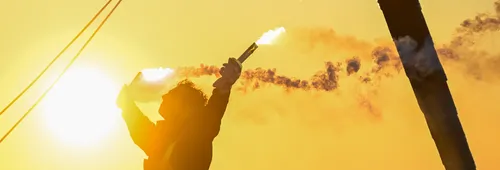Race fans will recall that in 2016-17, Conrad Colman dismasted between the Azores and Portugal, 750 miles from the finish (he finished under jury rig 12 days later). In 2013, the Spanish solo skipper Javier Sanso capsized in the southern Azores after losing his keel. The same year, Jean Pierre Dick anchored for three days in the north of Spain to avoid a big gale after sailing his boat without a keel from Cape Verde (he finished fourth). In 2008, it was another keel failure just before the Azores that prevented Roland Jourdain from finishing the race at all. Four years earlier, the same concern for Brit Mike Golding, whose keel broke off 90 miles from the finish (he nevertheless finished 3rd). Catherine Chabaud dismasted at 250 miles from Vigo (Spain) during the 2000-2001 edition and even in the second edition Philippe Poupon lost his mast a few days from the finish line and lost second to Jean Luc Van Den Heede but became the first skipper to finish under jury rig like Colman did eight years ago.
Fighting to effect a repair to his torn mainsail Briton Sam Goodchild has glued the two parts of his sail together and this morning was adding the strong carbon patches on both sides of the sail which will give the mainsail strength. He was waiting for the glue to cure before moving on to try and repair or replace his broken battens which are essential for the sail to hold a rigid shape.
Goodchild is down to seventh this afternoon, Nico Lunven (HOLCIM PRB) and Paul Meilhat (Biotherm) trading fifth and sixth back and forwards twice today.
Meilhat recalled, We had up to eight metres of waves. I had reduced the sails a lot to be on the safe side. It was quite impressive but fortunately, the waves weren’t breaking too much. These are the kind of seas that we are more used to observing from land, like with the family when we go to admire the storms. These images reminded me of England, where, when I was sailing a 49er, our weeks in Weymouth were often interrupted by bad weather. When races were cancelled, we would go and watch the raging ocean from the beach. Looking back, it was a bit like that: that moment when you look out at an impassable sea, except that this time, we were out there in the absolute thick of it. We really feel like we're going through a Stations of the Cross until the finish line.







